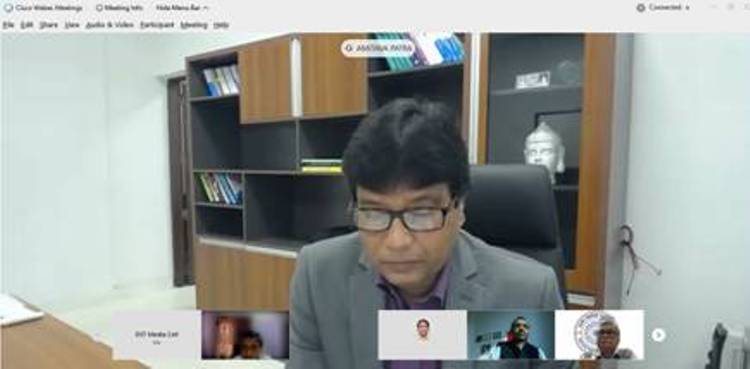Experts discuss role of emergent electromagnetic phenomena in quantum materials
Prof. Ajit Kumar Chaturvedi, Director IIT Roorkee, stressed the importance of quantum materials, especially on electronic devices.

- Country:
- India
Leading international and national experts from the field of quantum matters discussed the role of emergent electromagnetic phenomena in designer thin films, heterostructures, and hybrids of quantum materials at the National Conference on Quantum Matter Heterostructures (QMH)-II.
“Quantum Materials are enticing for science and technology, and activities are being initiated with state-of-the-art facilities to synthesise new kinds of quantum devices for technological application. Combining the power and possibilities of heterostructure engineering with the collective and emergent properties of quantum materials, quantum-matter heterostructures open a new arena of solid-state physics,” said Prof. Amitava Patra, Director, Institute of Nano Science and Technology (INST), Mohali, while addressing the inaugural session.
Prof. Ajit Kumar Chaturvedi, Director IIT Roorkee, stressed the importance of quantum materials, especially on electronic devices. “We cannot imagine any electronic device without foundation laid by the materials starting from the basic p-n junction. The kinds of devices that can be created on the basis of heterostructures depends on the creativity of the experts,” he said at the conference jointly organized by the Institute of Nano Science and Technology (INST), Mohali, and Indian Institute of Technology Roorkee between February 18 to 20, 2021.
“In 2018, the office of PSA showed keen interest to bolster the material resources in India with particular emphasis to cater to the need of quantum technologies. This conference will serve as a platform to discuss the emergent trends in quantum matters and heterostructures to foster the collaboration on the topic of mutual interest,” Dr Suvankar Chakraverty, member of the organizing committee of the National Conference on Quantum Matter Heterostructures (QMH)-II pointed out.
Prof. R. Ramesh from the Department of Physics, University of California, Berkeley deliberated on ‘Observation of chiral, room temperature polar Skyrmions’ a phenomenon that occurs due to thermodynamics where he highlighted the work done by his team and discussed the challenges in quantum matters like converting spin to charge and charge to spin at his plenary talk. Prof. Masashi KAWASAKI from the Department of Applied Physics, University of Tokyo, spoke on ‘Electrons in ultra-clean ZnO heterostructures’ and presented an overview of the recent activities on oxide heterostructures based on Zinc Oxide (ZnO) carried out by his group. The talks were chaired by D. D. Sarma from the Indian Institute of Science, Bengaluru, India. Dr Vivek Malik, the organizer from IIT Roorkee, had conducted the inaugural session.
The conference organized by INST, Mohali, an autonomous institute of the Department of Science & Technology, Government of India in association with IIT, Roorkee, was attended by more than 250 invited speakers who will discuss the present status, limitations, perspectives, and challenges in the field of heterostructures of quantum materials and related devices over three days. On the third day of the conference, a special session dedicated to the memory of Professor S.K. Joshi is being organized to discuss bulk materials relevant for Quantum Heterostructures. Future plans and perspectives in the field of QMH will also be discussed on the same day.
The conference, which brings together experts from around the world to discuss research related to heterostructure engineering for quantum materials and devices, provides a unique opportunity for researchers working in the area of Quantum heterostructures related to quantum materials to be exposed to the latest R&D in the field.
(With Inputs from PIB)










